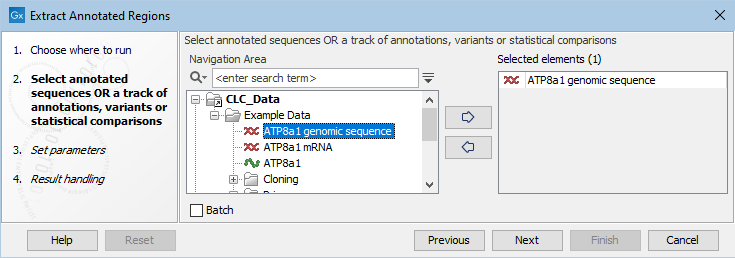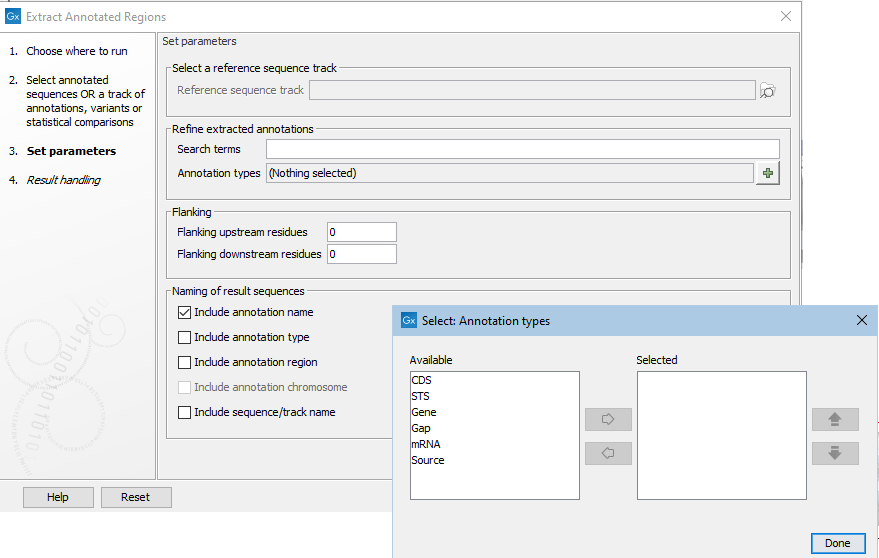Extract Annotated Regions
Using Extract Annotated Regions, parts of a sequence (or several sequences) can be extracted based on annotations. Lengths of flanking regions can be specified if desired. The output is a sequence list that contains sequences carrying the annotation specified.
Some examples of the use of this tool:
- Extract all tRNA gene sequences from a genome.
- Extract sequences for regions where annotations contain particular text
To launch Extract Annotated Regions, go to:
Toolbox | Utility Tools (![]() ) | Extract Annotated Regions (
) | Extract Annotated Regions (![]() )
)
This opens the wizard. In the first step (figure 27.1) you can select one or more sequences to extract annotated regions from.
Note: With the CLC Main Workbench, annotated sequences are expected as input. Options relating to track-based input are intended for the CLC Genomics Workbench, where this tool is also present.

Figure 27.1: Select one or more sequences to extract annotated regions from.
At the top of the next dialog step (figure 27.2) you can specify which annotations to use.

Figure 27.2: Configure the regions for sequence extraction.
- Search terms All annotations and attached information for each annotation will be searched for the entered term. It can be used to make general searches for search terms such as "Gene" or "Exon", or it can be used to make more specific searches. For example, if you have a gene annotation called "MLH1" and another called "MLH3", you can extract both annotations by entering "MLH" in the search term field. If you wish to enter more specific search terms, separate them with commas: "MLH1, Human" will find annotations where both "MLH1" and "Human" are included.
- Annotation types If only certain types of annotations should be extracted, this can be specified here.
The sequence of interest can be extracted with flanking sequences:
- Flanking upstream residues The output will include this number of extra residues at the 5' end of the annotation.
- Flanking downstream residues The output will include this number of extra residues at the 3' end of the annotation.
The sequences that are created can be named after the annotation name, type, etc:
- Include annotation name This will use the name of the annotation in the name of the extracted sequence.
- Include annotation type This corresponds to the type chosen above and will put this information in the name of the resulting sequences. This is useful information if you have chosen to extract "All" types of annotations.
- Include annotation region The region covered by the annotation on the original sequence (i.e. not including flanking regions) will be included in the name.
- Include sequence/track name If you have selected more than one sequence as input, this option enables you to discern the origin of the resulting sequences in the list by putting the name of the original sequence into the name of the resulting sequences.
Click Finish to start the tool.
